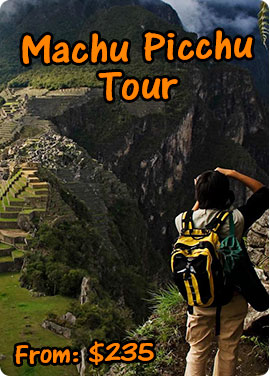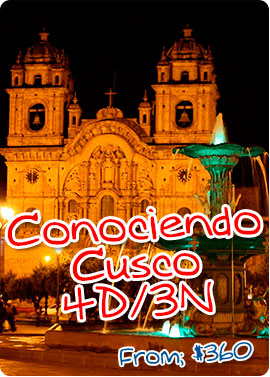It is located north of the city of Cusco, Cusco fencing district, province of Cusco. Access: These are three-way, two motorized and pedestrian. The unpaved roads are paved and other paved; one of Saphy, to San Cristobal and then runs along the slopes of Cerro Sacsayhuaman up to the booth access to the archaeological site; the second called the ring road or highway Manuel Frisancho (Argentina Av.), part of the University and reaches Sacsayhuaman; and finally the pedestrian route starting from the Plaza de Armas, Sweden -Take the street, then street Resbalosa (Suri Takana), the esplanade of San. Christopher or Qolkanpata and finally the bridle path through the gorge of Pujru to reach the esplanade of the archaeological site.
Reference point: It consists of the highest in the Archaeological group, called Rodadero or Suchuna, north of the misnamed strength point. This reference point is determined by the following visual: Cerro Norte Senqa ………………….. 315 ° Cerro Norte Phicol ……………………. 82 ° Cerro Norte Tambomach’ay ……….. 10 ° Height and coordinates: Sacsayhuaman is at 3.555 meters above sea level and its coordinates are: 71 ° 59’19 “west longitude 13 ° 20 ’22 “South latitude Etymology: Different historians, writers, linguists and researchers who have dealt with this archaeological site. To date, they are not according to the true meaning: the name of this. Linguistic concepts, almost generality, are related concepts with totemic features of religion and Andean philosophy of this period, which in ideological concepts – religious of the ancient Peruvians (prehispanic) was common to find animal names in the constructions, shapes or resemblances to these. Patronymics given to constructions were imitated not literally but these approached the names given in this regard we found that the above constructions resembling, in many cases, the given name. For some the name of Sacsayhuaman has the meaning of sáciate hawk or falcon satisfied eating so much as the falconácea waman of this region of Cusco; well within the configuration of the Andean mentality ideology, wamancha was the guardian of all the crippled bird (means big powerful armed man and was also the name of many rulers Inkas). For others it means marbling hawk and if also head of puma. In this way: The Jesuit priest Diego Gonzales Quechuólogo Olguin: Indicates Sacsayhuaman corresponds to a pukara or castle without giving a translation term. Dominican priest Don Ambrosio Morales: Indicates that the name derives from the Latin meaning or Greek adjective Phoenician SAXEA termination, which means stone or rock and the Syrian term – Hebrew HAMAN, meaning city .; therefore, it means Sacsayhuaman stone stone town or city. Other quechuistas indicate that the term Sacsayhuaman means condor head or head puma, the latter meaning as a result of mentioned that Cusco had a stroke that resembled shaping the contours of a puma and so the head would be located in this place. Personally I agree with one of the meanings of totemic, is this the meaning of puma or Falcon, discarding the others, because if we look in detail guilty of exaggeration. Thus, the totemic conception is clearly linked to the urban plan of the city of Cusco. Carved stones, quarry, transportation, weight and type of wall:
Although the subject of stone and carved itself extensive and widespread speculation, I would like first of all to refer to the belief, popular so widespread that states that the stones were diluted with the sap of certain plants or else with the saliva of a bird in the region and it is in this way that workers could perform these cyclopean constructions; but we need to raise awareness that it is a popular fable without any sense or scientific nature. Secondly the unscientific and logical ideas that were extraterrestrials who built these sectors or taught transportation, levitation, telekinesis TV, etc. which is more than all insult to the intelligence, so the most logical first serious than the second, but both are simple and pure stories and we must put these musings forgotten. The walls and various constructions of various archaeological sites are carved limestone, irrefutably by percussion system made with stone hammers harder than the stone worked for the production of stone mantles (walls) is might be basalt or jiwaya ( oligosto-hematite-meteoric meteoric) or another lyric: why surfaces or faces of the tilled blocks have some white spots concave character or a greater circumference than the points of incision left by the ‘chisel or bucharda; these points greater circumference and depth are called percussive mirrors, hammer. We can do likewise reference to the chroniclers when referring to carving and lithic blocks canting, who we mentioned this fact very clearly; and the chronicler Father Bernabe Cobo, in his chronicle “History of the New World” when referring to the carved blocks, says: “.the instruments they had. to cut and carve the stones were very hard pebbles of the rivers, that tilled crushing rather than cutting. “al. say they were pebbles of the rivers makes wings (qollotas stone (stone hammers, possible boulders) reference and when he says mashing refers. clearly percussion) by this reference we see clearly that the chroniclers already knew the work of stone and wrought lyrical blocks and not as today there are people who elocubran on how the stone is worked or It said it was not known how the blocks were tilled or not known as these were worked. Finally, to complete the work of the blocks, silicate quartz sand was used. Canteras: As for quarries where the blocks were removed, its location is simply because these are the quarries Yuncaypata. As the outcroppings of limestone from the same place and places where buildings were made took advantage. These blocks were transported by wooden rollers, cylinders or balls of stone (large qollotas), but to use these elements had to perform several previous works: in some cases, smooth or terracing ‘land, filling erosional cracks or other small chasms , make embankments, roads type compounds as follows: Land or natural surface. Stone fill. Sand. Serbian sand degreaser or sliding to mobilize the blocks on the rollers, cylinders, etc. They used very soft inclined planes to raise or down large blocks and if they were smaller blocks, scaffoldings. When should carry or carry small blocks, it was a human back or else a litter type stretchers made of two sticks of wood pierced with smaller staffs (huantuna) were used. The weight: The greatest weight ‘is known block inside the archaeological site of Sacsayhuaman, is a lytic whose weight is 125 metric tons and is in the first wall in the middle. Another block of a very considerable weight, is one that is in one of the angles, which is 88 metric tons; but there are no more blocks 300 tons as many suggest. Form or type Muro: The factor of canteado (wrought) has influenced to give it configuration mantles or walls, so that the core group of Sacsayhuaman belongs to the style commonly called cell wall or irregular polyhedral,
although a more accurate determination for use in meaning architecturally archaeological and classification ‘megalithic walls is Poligonal in other cases semimegalítico polygonal; isodómicos there are also smooth and rough walls (isodómicos are called blocks). Both as isodómicos polygonal walls, there are also, padded surfaces’ or semiadobadas forms, although in certain silk creations by the type … lithic, not only here but in many others, by-disjunctions of the rocks, which it is the natural fracturing or faulting diaclasación of lithic can configure the type; canteado of the blocks; therefore the settlement blocks of stone mantels are dry or opus insertum, which means without binding mortar between them although there were mortared walls. Therefore we conclude saying: That the quarries were not too far from set. The carving was by the percussive method with stone hammer worked harder than stone and sand. That transport was carried out with embankments, inclined planes, rollers, human transport and stretchers. The weight of the blocks is at least 30 kg up to 125 metric tons. The type of stone used is usually the calcareous sedimentation of marine or lacustrine funds.



